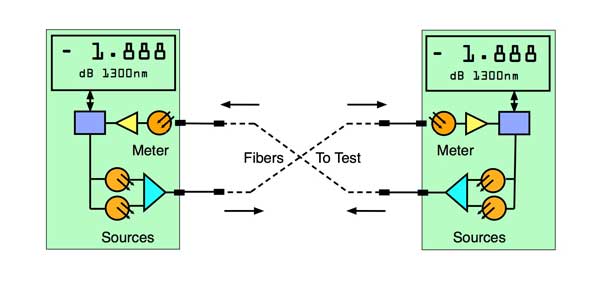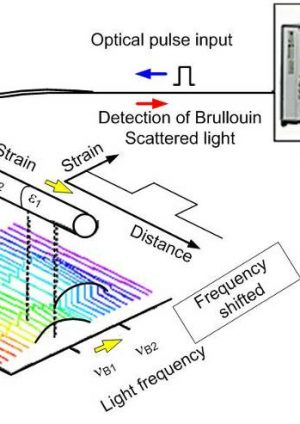High-Performance Optical Fibre Diameter Analyser for Demanding Applications
High-Performance Optical Fibre Diameter Analyser for Demanding Applications
Blog Article
Optimize Your Fiber Optic Efficiency: Understanding Optical Fiber Diameter Analyser Innovation
The efficiency of fibre optic systems is seriously affected by the accuracy of their size, a factor often forgot in the pursuit of optimum signal honesty. Recognizing the technology behind optical fibre diameter analysers discloses the complex equilibrium between measurement precision and manufacturing quality. These tools not only boost conformity with industry criteria however additionally supply real-time insights that can preemptively resolve potential issues. The effects of their usage prolong past plain dimension; they can basically alter the landscape of fibre optic effectiveness. What variables should one think about to harness their complete potential?
Significance of Optical Fiber Diameter
The size of optical fibre plays a crucial duty in determining the efficiency and effectiveness of interaction systems. It influences several essential criteria, including the setting of light proliferation, attenuation, and data transfer capability. Larger sizes commonly permit for multiple light settings, helping with greater data transmission rates. Alternatively, smaller sized sizes tend to support fewer settings, which can improve signal clarity and reduce crosstalk.

In addition, recognizing the size's implications can cause set you back savings by reducing the requirement for signal boosting and repeaters in considerable networks (optical fibre diameter analyser). In final thought, the relevance of optical fiber size can not be overemphasized, as it directly affects the total efficiency and reliability of modern-day interaction systems

Exactly How Diameter Affects Signal Quality
Signal top quality in optical fiber systems hinges substantially on the size of the fiber. The size influences numerous essential specifications, including attenuation, bandwidth, and modal diffusion. A smaller diameter can bring about higher depletion rates, causing signal loss as light journeys through the fiber. This attenuation can endanger the stability of the transmitted information, resulting in a decrease in signal top quality, particularly over fars away.
On the other hand, larger diameters normally enable boosted light capture and decreased modal diffusion, boosting signal clarity. In multimode fibers, a larger core size can support multiple light modes, but it might likewise introduce intermodal diffusion, which can degrade signal quality. Choosing the optimum fiber diameter is critical for achieving the preferred efficiency in details applications.
Moreover, the communication between the fiber diameter and the wavelength of the light utilized plays a crucial duty in figuring out the effective transmission range and total signal integrity. As such, understanding exactly how fibre diameter influences signal quality is crucial for network designers and designers making every effort to enhance optical fibre systems for dependable, high-speed data transmission.
Summary of Diameter Analyser Technology
In many optical fibre manufacturing procedures, exact dimension of fiber diameter is important for ensuring consistent efficiency and quality (optical fibre diameter analyser). Diameter analysers are sophisticated instruments developed to evaluate the physical measurements of optical fibres with high precision. They utilize advanced optical and laser modern technologies to determine the size, ovality, and concentricity of the fiber, therefore offering critical data for top quality control
These analysers can operate in-line throughout the manufacturing process or as part of off-line screening procedures. In-line systems enable real-time monitoring, allowing makers to readjust criteria instantly, consequently keeping ideal production problems. Off-line analysers, on the various other hand, offer thorough assessments of sets, ensuring that any deviations from defined tolerances are determined and addressed.
Size analysers considerably add to the reduction of flaws in optical fibres, enhancing general item integrity. By constantly determining key parameters, these modern technologies help with compliance with industry standards and specs. As the need for high-performance optical fibres continues to climb, the role of diameter analysers comes to be significantly vital in achieving the wanted top quality and efficiency requirements in fibre optic systems.
Key Features of Fiber Diameter Analysers
Although various versions of fiber diameter analysers exist, they frequently share a number of key attributes that improve their performance and reliability. One of the most considerable features is high-resolution dimension capabilities, which ensure exact size analyses, crucial for maintaining high quality control in fibre production. Furthermore, numerous analysers integrate innovative optical sensors made to detect minute variations in fiber size, therefore offering invaluable data for process more tips here optimization.
One more vital attribute is real-time tracking, enabling drivers to receive instant feedback on fibre size throughout the production process (optical fibre diameter analyser). This ability assists in fast modifications and reduces the possibility of flaws. Several analysers likewise come geared up with easy to use interfaces, making it possible for drivers to conveniently browse through data and settings results
In addition, my blog durable information storage and evaluation capabilities are essential for tracking historic efficiency patterns and guaranteeing compliance with industry standards. These attributes collectively contribute to the efficacy of fiber size analysers in optimizing fibre optic efficiency.
Finest Practices for Fiber Optimization

First, normal calibration of optical fiber diameter analysers is crucial. This makes certain accurate measurements and decreases prospective discrepancies that might affect efficiency. Next off, maintaining a tidy working setting is crucial; dust and impurities can cause signal destruction.
Additionally, it is very important to pick fibres that fulfill details application demands. This involves examining aspects such as attenuation, transmission capacity, and ecological problems. Proper installment techniques need to also be adhered to, consisting of avoiding sharp bends and extreme tension, which can jeopardize fibre integrity.
Moreover, employing innovative surveillance systems can assist in real-time efficiency evaluations, making it possible for prompt identification of concerns. Normal screening and maintenance should be performed to ensure that fibres stay within optimal operational specifications.
Last but not visit their website least, training personnel on the most current fiber optimization innovations and methodologies will improve their capacity to apply effective approaches. By following these ideal methods, organizations can significantly improve the efficiency and life-span of their optical fiber systems, making certain effective communication and data transfer.
Conclusion
Finally, the integration of optical fiber size analyser innovation is vital for making best use of fibre optic efficiency. By guaranteeing specific measurements of fiber dimensions, these analysers substantially boost signal high quality and decrease losses during data transmission. Routine calibration and maintenance of the analysers are crucial to promote optimal efficiency and conformity with market requirements. Eventually, the application of this modern technology assists in improved information transmission prices and strengthens signal honesty, adding to the total effectiveness of fiber optic systems.
Signal top quality in optical fibre systems hinges dramatically on the diameter of the fiber.In many optical fibre production processes, precise measurement of fibre size is necessary for guaranteeing constant efficiency and high quality. As the need for high-performance optical fibers continues to increase, the duty of diameter analysers comes to be increasingly essential in achieving the preferred quality and efficiency criteria in fibre optic systems.
These functions jointly contribute to the efficacy of fiber diameter analysers in enhancing fibre optic performance.
In conclusion, the integration of optical fibre diameter analyser innovation is important for taking full advantage of fiber optic efficiency.
Report this page